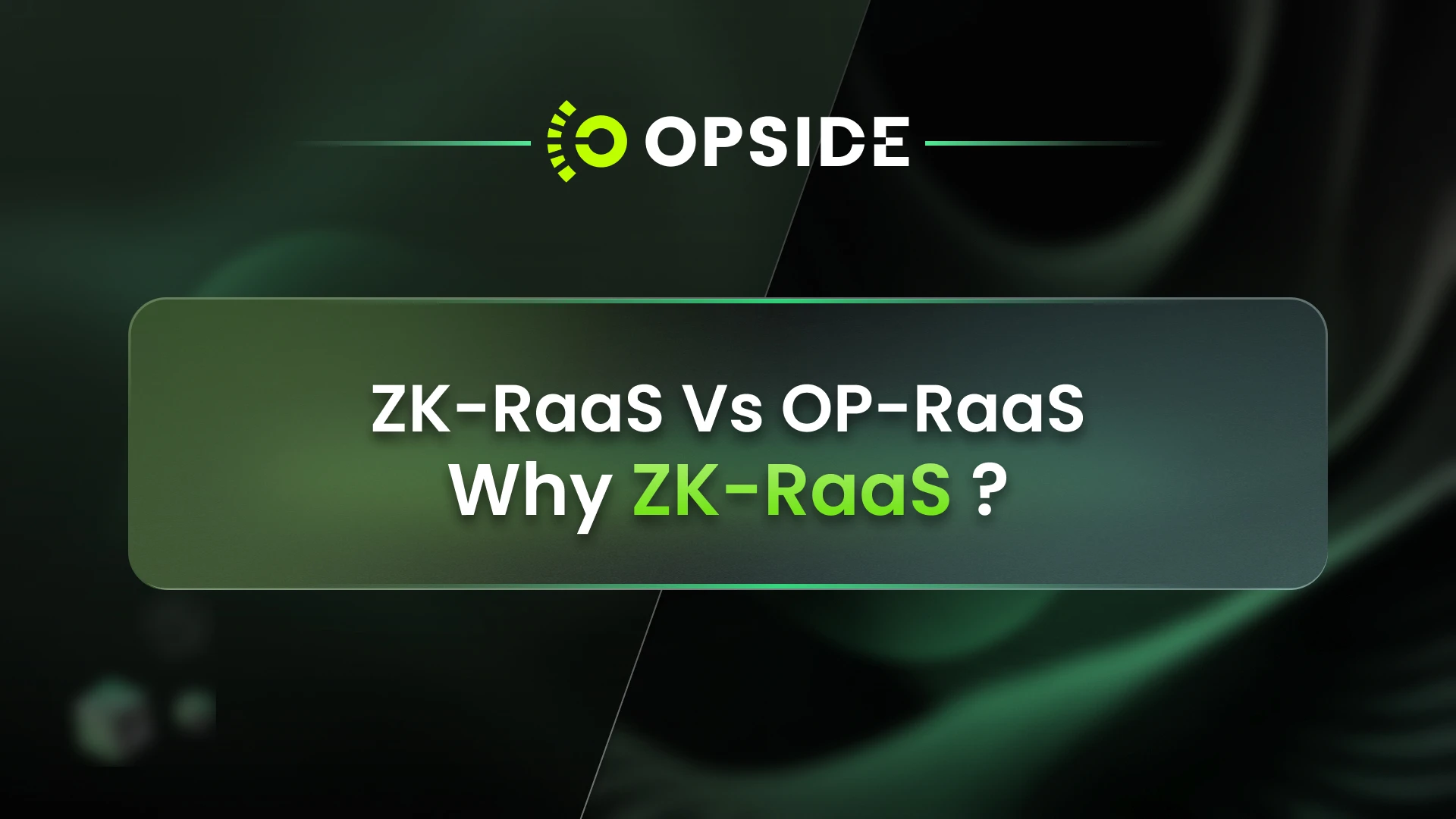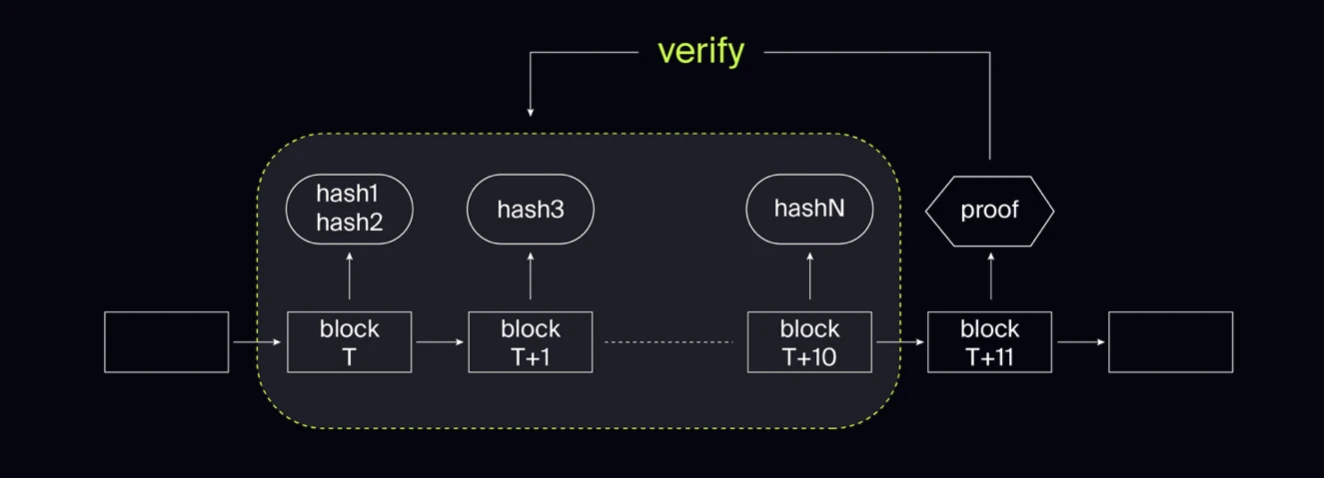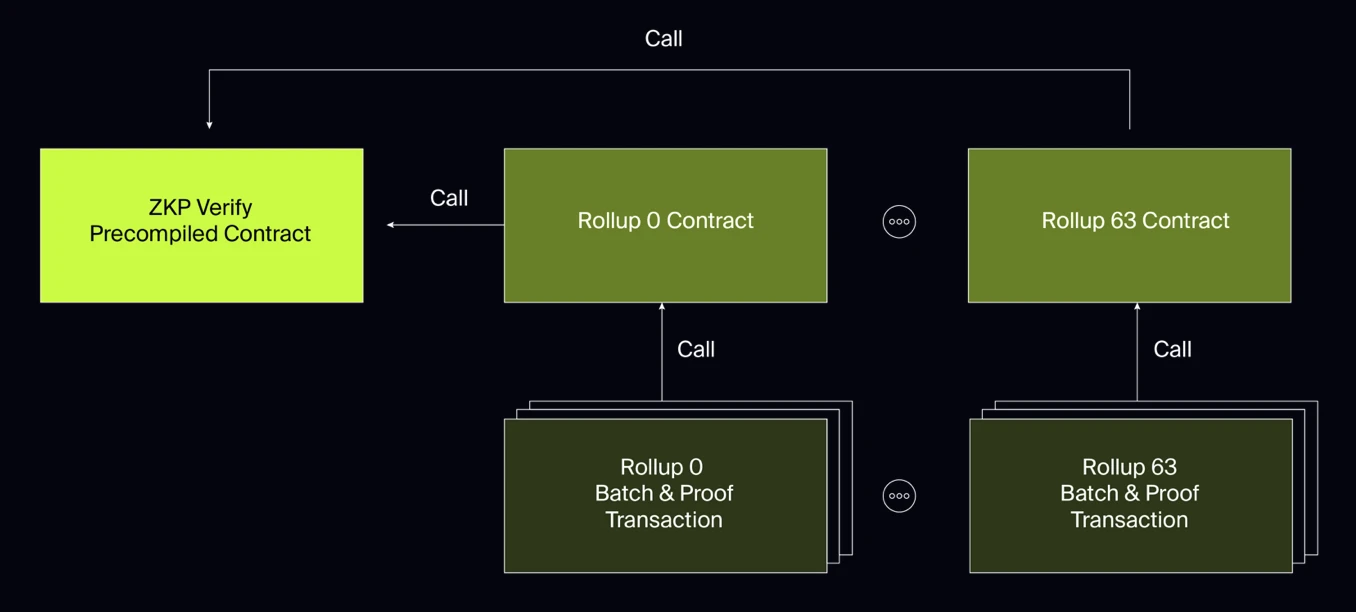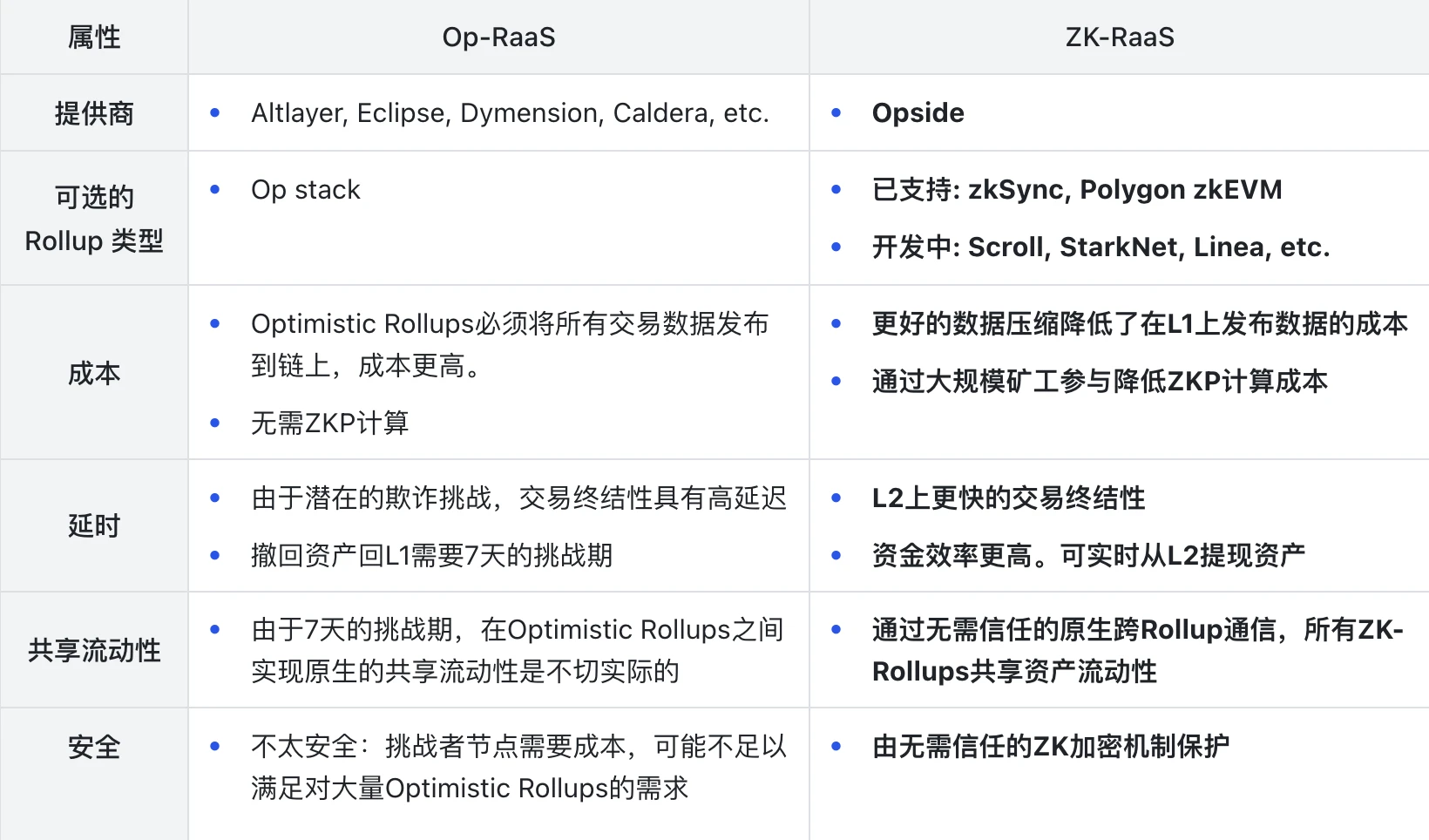
TL; DR
ZK-Rollups have the following advantages over Optimistic Rollups:
Compressed transaction data saves L1 Gas costs
More secure, no need for trust
Faster transaction confirmation speed and shorter withdrawal time
In addition to these benefits, ZK-RaaS also has advantages in the following areas through network effects:
ZK-RaaS provides scalable computing power for massive ZK-Rollups through ZK-PoW, thereby reducing the cost of ZKP calculation
Due to the faster transaction confirmation speed of ZK-Rollup (in minutes), the Native Cross Rollup Communication (NCRC) protocol can be implemented between ZK-Rollups, solving the problem of fragmented liquidity
What is RaaS?
Rollups-as-a-Service (RaaS) provides an abstraction layer on the Rollup framework and SDK to easily deploy, maintain, and build custom, production-grade specific application Rollups (AppRollups). RaaS is similar to software-as-a-service products, allowing developers to focus on building the application layer, turning a process that previously required multiple engineers to spend tens of hours into a 10-minute no-code deployment process.
The two main types of Rollups are Optimistic rollups and ZK-Rollups. They differ in transaction verification and dispute resolution, and have different advantages and disadvantages. Based on the type of Rollup provided, this article divides RaaS into Op-RaaS and ZK-RaaS.
I. Cost
Lower L1 Gas costs for ZK-Rollups compared to Optimistic Rollups
One of the main goals of Rollup solutions is to increase the throughput of transactions on Ethereum and reduce user Gas fees. Both Optimistic Rollups and ZK-Rollups achieve this goal by batching transactions and periodically submitting them to the mainnet. Therefore, they both incur Gas fees for submitting data to L1.
Due to the use of fraud proofs, Optimistic Rollups must publish all transaction data on-chain. Therefore, they require more Gas to batch submit data to the main chain.
Due to efficient data compression techniques in ZK-Rollups (e.g., using indexes to represent user accounts instead of addresses, which can save 28 bytes of data), this helps reduce the cost of publishing transaction data on the base chain.
Therefore, ZK-Rollups can save more L1 Gas compared to Optimistic Rollups.
ZK-RaaS reduces ZKP calculation costs through massive miner participation
However, ZK-Rollups require additional computational costs for generating zero-knowledge proofs. This is what ZK-RaaS aims to address.
With the large-scale implementation of ZK-Rollups, generating ZKPs requires a large amount of CPU, GPU, FPGA, and other hardware and mining machines to provide computational power. Opside (https://opsi.de) has also proposed the concept of ZK-PoW, introducing the role of miners to participate in maintaining zkEVM nodes and ZKP calculations. The Opside ZK-PoW protocol will be deployed on multiple chains, including but not limited to Ethereum, BNB Chain, Polygon PoS, and Opside Chain itself.
To encourage more miners to participate in ZKP calculation tasks, Opside has proposed the ZKP's Two-Step Submission Algorithm. A share of the PoW reward for a ZKP will be distributed to the submitter of the valid ZKP according to certain rules, i.e., the miner.

Submit proofhash: Within a time window, multiple miners are allowed to participate in zero-knowledge proof calculation for a specific sequence. After calculating the proof, each miner does not directly submit the original proof, but calculates the proofhash (proof / address) and submits it to the contract.
Submit ZKP: After the time window, miners submit the original proof and verify it against the previously submitted proofhash. Miners whose submissions pass verification can receive PoW rewards, and the reward amount is distributed in proportion to the miner's staked amount.
In Opside, the two-step submission algorithm for ZKP achieves parallel computation and serial submission of ZKPs, allowing miners to simultaneously execute multiple ZKP generation tasks, greatly accelerating the efficiency of ZKP generation.
II. Transaction Finality and Capital Efficiency
Optimistic Rollups: There is a challenge period of up to 7 days, and transactions are not finally confirmed on the main chain until the end of the challenge period. Therefore, Optimistic Rollups have a high delay in transaction finality.
ZK-Rollups: The advantage of ZK-Rollups is low delay in transaction finality, generally a few tens of minutes or even a few minutes. Once the operator node verifies the validity proof, it leads to state updates.
Due to the challenge period in Optimistic Rollups, users cannot withdraw funds before the expiration, causing inconvenience. In contrast, ZK-Rollups have no challenge period, providing users with better fund/liquidity efficiency and the ability to withdraw funds at any time.
III. Shared Liquidity
It is worth noting that due to the fast confirmation of transactions in ZK-Rollups, it is possible to achieve trustless communication between ZK-Rollups, allowing all Rollups to share asset liquidity. Due to the existence of fraud proofs and a 7-day challenge period, achieving trustless native communication between Optimistic Rollups is not practical.
The ZK-RaaS platform Opside's NCRC (Native Cross Rollup Communication) protocol provides a trustless Rollup interoperability solution. The NCRC protocol does not add an additional third-party bridge on each Rollup, but instead transforms the native bridge of ZK-Rollup at the system level, directly using the native bridges of each ZK-Rollup to achieve cross-Rollup communication. This approach is more concise and thorough, inheriting the absolute security of the native bridge and avoiding the system complexity and trust cost brought by third-party bridges.

NCRC has been launched on the testnet, and users can experience it directly at https://pre-alpha-assetshub.opside.network/.
IV. Security
Optimistic Rollups: Fraud proofs ensure the validity of transactions by allowing honest verifiers to protect the blockchain network. If there are no honest nodes to challenge invalid transactions, malicious actors can steal funds, making these optimistic rollups insecure.
ZK-Rollups: ZK-Rollups do not rely on honest verifiers, but use zero-knowledge proofs to verify transactions. The advantage is that ZKPs provide security guarantees through mathematical proofs rather than human participants. Therefore, ZK-Rollups are trustless.
Although fraud proofs for Optimistic Rollups are theoretically feasible and a few Rollups are already operational, as time goes on and the number of Optimistic Rollups increases, the risks of this security model will gradually be exposed, becoming a gray rhino or even a black swan. Running an honest verifier incurs costs, and most of the time there is no profit. When Op-RaaS creates a large number of Optimistic Rollups, it is difficult to ensure that every Rollup has honest nodes, especially those that are not in the spotlight, apart from a few top Rollups.
On the other hand, the security of ZK-Rollups is trustless, as they do not rely on users or verifiers to challenge fraudulent transactions, but provide security guarantees through mathematical proofs.
Summary
Whether it's ZK-RaaS or Op-RaaS, developers don't need to manage complex software and hardware to have their own Rollup application chain.
Represented by the ZK-RaaS platform Opside (https://opsi.de), the introduction of the ZK-PoW and NCRC protocols makes the advantages of ZK-Rollups even more apparent.

免责声明:本文章仅代表作者个人观点,不代表本平台的立场和观点。本文章仅供信息分享,不构成对任何人的任何投资建议。用户与作者之间的任何争议,与本平台无关。如网页中刊载的文章或图片涉及侵权,请提供相关的权利证明和身份证明发送邮件到support@aicoin.com,本平台相关工作人员将会进行核查。




